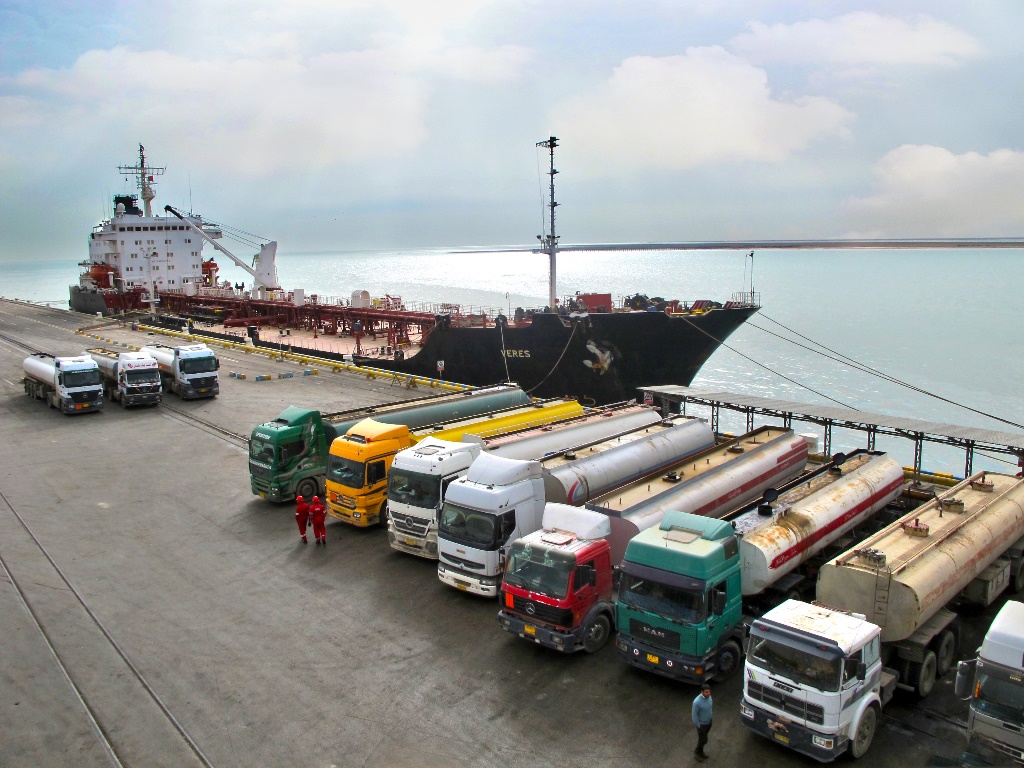Road Maintenance and Transportation Organization (RMTO) on Monday announced 6% growth in border transit over the first two months of the current Iranian year, which started on March 21, compared to the similar period of the previous year.
Managing director of RMTO’s transit and border terminals department, Mohammad-Javad Atrchian, said total cargo handled by the country’s 32 land and maritime borders during the period stood at 2.228 million tons.
The cargo transported through the country over the period comprised 1.141 million tons of oil products and 1.086 million tons of non-oil products, the official told IRNA, adding that chemicals, cotton, home appliances and food products were the major non-oil cargo transported during the period.
Parviz Khan Border in the western province of Kermanshah was the most active border terminal in terms of incoming transit with 582,000 tons (26%) followed by Bandar Abbas with 19.2%, Bashmagh with 18.5% and Bazargan with 10%.
Bandar Imam Khomeini Port with 910,000 tons (41%) was the leading border terminal in terms of outgoing transit, followed by Bandar Abbas, Bazargan, Lotfabad and Sarakhs with 14.3%, 6.5%, 6.3% and 5% respectively.
Atrchian noted that the Iraq-United Arab Emirates (UAE) route recorded the highest volume of cargo transported by trucks, adding that of the total 99,000 truck trips on this route during the period, 58,000 or 59% was carried out by Iranian trucks and the rest by trucks from other countries.
“Iran’s strategic geopolitical position makes it an important transit junction between Asia and Europe, creating vast potential for growth in passenger and cargo transportation,” said the official.
Iran transported 12.34 million tons of cargo in the 12 months ending on March 21, 2015, recording 5.6% growth compared with a year earlier. The country is expecting the figure to grow by another 12 million following the implementation of the “Silk Road Revival” project in collaboration with China.
Silk Road Revival
The Silk Road project was introduced by Chinese President Xi Jinping in 2013 to revive the 2,000-year-old land and maritime route that connects China to the Middle East, Central and Southeast Asia and Europe.
China plans to invest billions of dollars on improving infrastructure and industrial and financial cooperation with emerging markets that lie along the routes; one of which will pass through Kazakhstan, Kyrgyzstan and Iran and continues to Greece.
Head of Iran Customs Administration, Masoud Karbasian, on Wednesday announced that as much as $900 billion have so far been allocated for reviving the Silk Road transit route, Mehr News Agency reported.
Karbasian also noted that more than 170 heads of customs authorities and representatives from the World Customs Organization, the United Nations and International Road Transport Union recently attended a summit in China to discuss ways to implement the project.
“Iran plays a vital role in boosting the volume of cargo transit in the region as the country has land and maritime borders with 15 countries, seven of which do not have any access to the sea,” he observed.


